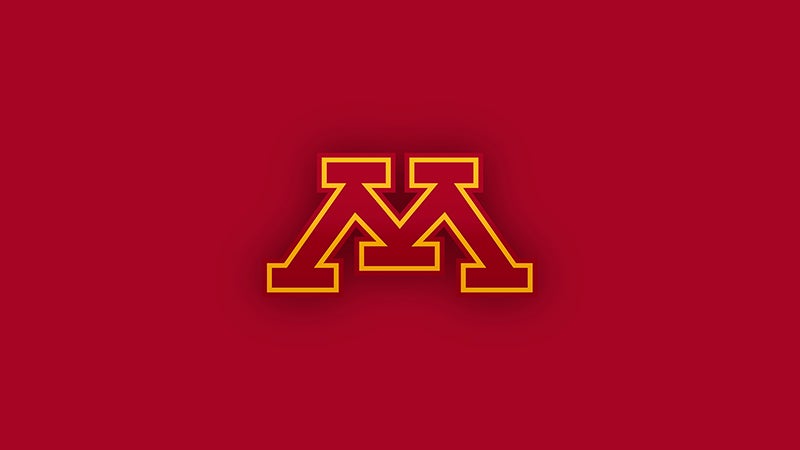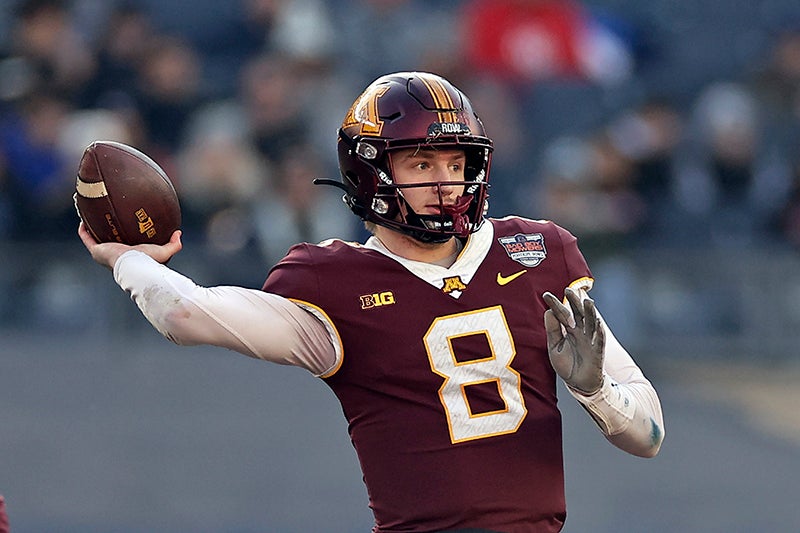From the ground up
Published 8:47 am Thursday, August 11, 2011

Minnesota Gophers wide receiver Troy Stoudermire runs into the endzone last season at Illinois. The Gophers and new head coach Jerry Kill have begun practing this season and hope to rebuild the program that’s been dormant since the 1960s. -- Photo courtesy of the University of Minnesota
MINNEAPOLIS — Jerry Kill has spent the better part of a busy nine months putting his personal touch on the Minnesota program he’s trying to rebuild from the ground up.
Now he’s arrived at the fun part: actually coaching football.
“It isn’t about schemes. It’s about if we’ve gotten a little bit stronger, a little bit faster,” Kill said before the start of fall practice. “Some of the new recruits that are in, you’re always looking forward. Are they really as good as you anticipated? Or are they not quite where they need to be? Those things always excite you. We’re all on the same page now.”
When Tim Brewster took over in 2007, he spoke like a salesman, infamously promising Rose Bowl trips and Big Ten titles while rarely mentioning his team without superlatives like tremendous and outstanding.
When Brewster was fired last October with a 15-30 career record, the Gophers were back to starting over again — just like with Glen Mason, Jim Wacker and all the others who’ve tried to remake maroon and gold into the consistently winning colors they once were in the 1960s and before.
Kill has brought the same kind of palpable, relentless energy to the job that Brewster did at the beginning, making it clear that it will take hard work to boost the Gophers to the upper level of the Big Ten. But the difference is that Kill, in his raspy Kansas drawl, has offered little praise for his new team.
When asked last week at his news conference what will constitute a successful first season, Kill responded with a 520-word answer about his methodical approach to program fixing, a project he took on at Northern Illinois, Southern Illinois and other smaller schools prior to coaching there. He has essentially conducted a root-cause analysis of why the Gophers won only three games in 2010 and why they haven’t been to the Rose Bowl in 50 years.
“We’re starting from the ground up,” Kill said, adding: “We identified there’s much more than just the football players themselves — it’s the whole program. We’ve analyzed it, we’ve got a vision, and now we’ve got to go work.”
Kill has gone out of his way to instill a renewed sense of discipline in his players, whether in class, on the field or anywhere else. He has drilled the message into their minds that hard work is necessary to get better so much so that there seems to be almost a healthy fear of disappointing the new boss.
“He really impressed me as a guy who would really discipline us, who would not let us get away with anything on or off the field, and he’s really held true to that,” said linebacker Mike Rallis. “I think that’s exactly what we needed, and it’s improved us as people and as football players.”
The Big Ten doesn’t leave much margin of error for a program like Minnesota, even with that still-sparkling TCF Bank Stadium on the edge of campus to help keep the top local recruits around and lure others across state borders. The Gophers were placed in the Legends Division of the new-look, 12-team league, with Iowa, Michigan, Michigan State, Nebraska and Northwestern. Those five foes, which they’ll play annually, had a combined record of 43-23 last season.
Wisconsin (11-2 last year) will also be on the schedule each year, and the 2011 slate begins with a game at USC (8-5), a still-talented program trying to bounce back from NCAA sanctions.
Even with less-daunting games against New Mexico State, Miami (Ohio), North Dakota State, Purdue and Illinois, an even record and bowl-game eligibility would be a remarkable feat for the Gophers in their first year with Kill.
“Rightfully so, not a lot of people were on board with us,” said Rallis, reflecting on the recent struggles. “It really banded us together as a group, and we kind of said, ‘You know? It’s us against the world.’”
The task isn’t quite that tall, but it will take the right attitude to tackle it.
“A lot more energy. A lot more positive focus,” said MarQueis Gray of the vibe at practice this week.
Gray, who will take over for four-year starter Adam Weber at quarterback, will try to use his athleticism to supplement his strength and give the Gophers a run-pass threat similar to what Denard Robinson has done for Michigan.
The offensive line returns four players with extensive experience as a starter, Ed Olson, Chris Bunders, Ryan Wynn and Ryan Orton, and tight end Eric Lair could be a top target for Gray. The right tackle spot must be filled, with redshirt freshman Jimmy Gjere a strong candidate. Wide receiver Da’Jon McKnight is Gray’s best weapon, assuming he’s fully recovered from a knee injury. Brandon Green will be counted on to become another go-to pass catcher, a role that Gray filled last year while waiting for Weber to leave. Duane Bennett should be the featured running back, though there are several well-regarded recruits pushing him for carries.
North Carolina State transfer Chris Hawthorne has the potential to be the first reliable place kicker the Gophers have had in years, and Troy Stoudermire — asked to complete his transition to cornerback and be a leader in the secondary — is still a dangerous kickoff returner.
The defense, which was one of the worst in major college football last season, will rely on safety Kim Royston, who was granted a sixth year of eligibility after redshirting last season due to a broken leg. Other important contributors will be Rallis and fellow linebackers Keanon Cooper and Gary Tinsley and defensive tackle Anthony Jacobs. The top priority is the pass rush. The Gophers had only nine sacks in 12 games last year.
So many issues. One obvious solution.
“It takes no talent to work hard. I believe that. I’ve got no talent,” Kill said, “but I work hard to make up for it.”



